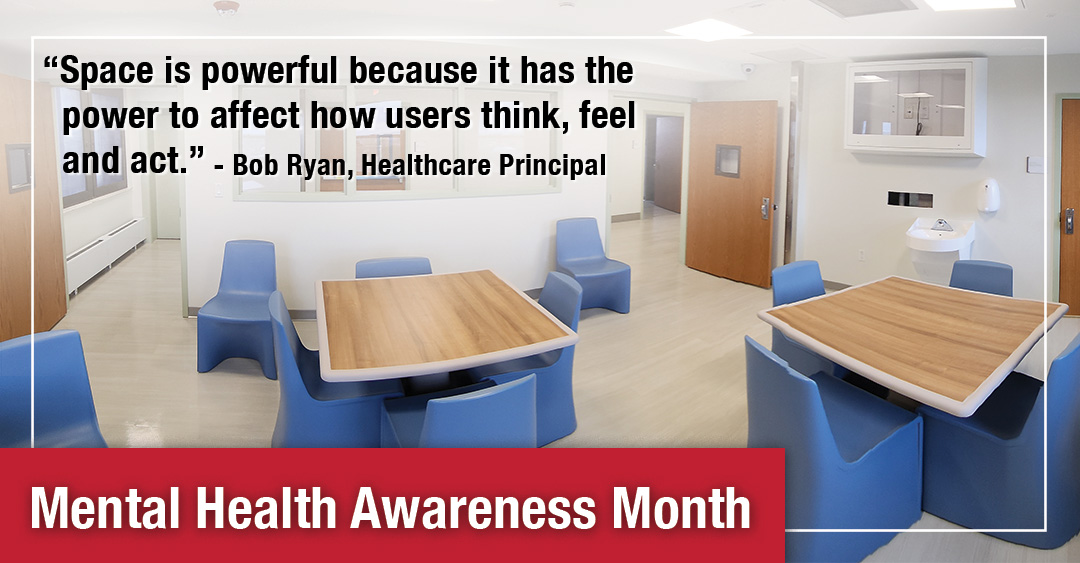National Mental Health Awareness Month in May presents an ideal time to highlight how and why physical spaces can contribute toward optimal emotional, psychological and social well-being for all, according to Bob Ryan, principal of DIGroup Architecture’s Healthcare Studio. The firm, which is based in New Brunswick and has an office in Philadelphia, prioritizes mental health across all of its studios, from healthcare and senior living, to education and community spaces.
“Addressing the mental health crisis in the United States is an all-hands-on-deck proposition,” said Ryan. “While physicians, neuroscientists and psychologists are taking the lead on how we can collectively improve the well-being of all members of our communities, there is more and more evidence that our physical spaces and environments have a direct impact on how we feel. As a result, there is an extremely important role for all of us to play.”
An integral part of the creative process for all of its architecture, interiors and graphic design professionals, DIGroup deploys a multi-disciplinary approach to prioritize mental wellness and cognitive experiences for all end users, from acute care and outpatient settings to civic gathering spaces and academia.
“Space is powerful because it has the power to affect how users think, feel and act,” said Ryan. “As a result, every room in every building has the potential to influence how people handle stress, relate to others and make choices.”
Ryan, who leads the highly specialized Healthcare Studio, has more than 30 years of experience in architecture for health and wellness clients. In this role, he works together with DIGroup’s interior and graphic design teams, as well as each client’s administrative and provider teams.
The singular goal for Ryan and DIGroup’s team is to deliver spaces that make sense clinically, are soothing and feel less sterile. Some of the firm’s techniques include incorporating inspirational graphics and wayfinding, gentle lighting and calming color schemes.
Examples of recent projects where DIGroup Architecture paid particular attention to creating positive human-facility interactions include:
- Manhattan Psychiatric Center, Wards Island, NY
- Hunterdon Behavioral Health Outpatient Unit, Flemington, NJ
- NY Center for Addiction Treatment Services, NY, NY
- Trinitas Regional Medical Center, Behavioral Health Facility, New Point Campus, Nurse Station, Renovations, Elizabeth, NJ
- JFK Medical Emergency Dept. Behavioral Health, Edison, NJ
- Monmouth Medical Center, Behavioral Health Suite, Long Branch, NJ
- Urban Health Plan Simpson Pavilion Bronx, NY
- RWJ Behavioral Health Hospital 3E Renovations, Rahway, NJ
“When we’re working on a healthcare facility, we work hand-in-hand with clinicians and administrators to marry clinical needs with psychological comfort,” Ryan said. “Studies have shown that even the simplest of architectural details – from lighting to color and layout – can create positive interactions between people and their spaces. We are committed to doing our part to advocate for architecture that creates change – and encourages mental health. This month, every month and every day.”

